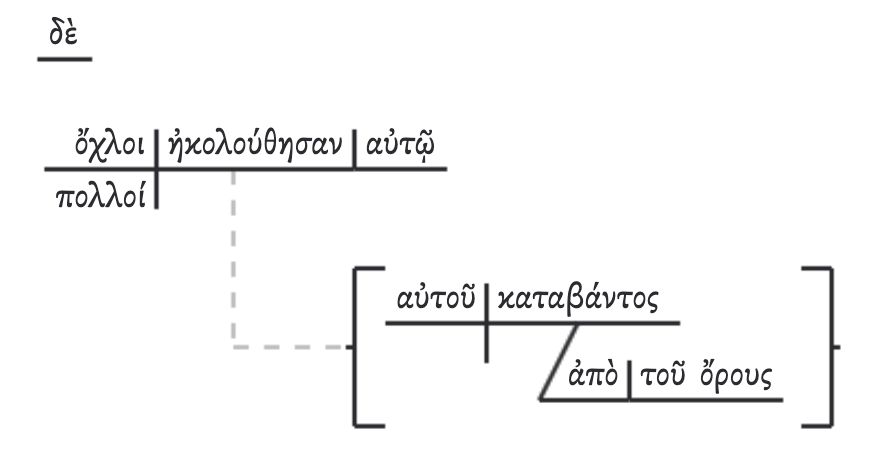Lesson 8 | Odds & Ends, Part 1
[2] Genitive Absolutes
The Importance of Mastering Participles
In Greek II, our main focus was on participles. We introduced the 3 Key Features for present, aorist, and perfect participles. Because participles occur so frequently, we introduced them early on in our series of courses. Still, Greek participles are able to communicate so much information, that studying them is like exploring a deep and rich mine.
“It is often said that mastery of the syntax of participles is mastery of Greek syntax.”
Daniel Wallace, The Basics of New Testament Syntax, 266.
That statement may seem daunting. But I hope it also motivates you to grow more and more in your understanding of the Greek participle, so that you might mine the Greek NT for all it is worth. In this lesson, we will examine two special participle constructions and then consider some important uses of adverbial participles.
Participles With Their Own Subject
Back in Greek II, we briefly introduced you to genitive absolutes. Let’s explore them a bit further.
The genitive absolute is an adverbial participle. That is, its primary purpose is to modify another verbal clause. However, unlike all other adverbial participles, it does not borrow its subject from the main verb. Instead, it has its own subject. The key to identifying a genitive absolute is that both the participle and its subject (very often a pronoun) are in the genitive case.
Because a genitive absolute is adverbial and yet has its own subject, it is really a way of saying something about two subjects at once: the subject of the participle and the subject of the main verb. Let’s look at an example.
Καταβάντος δὲ αὐτοῦ ἀπὸ τοῦ ὄρους ἠκολούθησαν αὐτῷ ὄχλοι πολλοί Now when he came down from the mountain, great crowds followed him. ~Matthew 8:1

The main clause in this sentence is about the large crowds that followed Jesus. Like all adverbial participles, the participle phrase, καταβάντος δὲ αὐτοῦ⸃ ἀπὸ τοῦ ὄρους, provides background information for the main clause. But since the background detail concerns a subject other than the crowds, a genitive absolute is used with its own subject. “He [Jesus] came down.” Most genitive absolutes are related to the main verb in a temporal fashion. “When he came down … great crowds followed him.”
Notice that the genitive absolute is able to say something about Jesus and something about the crowds. However, keep in mind that the main verb is in the foreground, while the participle provides the background information. So this participle is primarily telling us when the crowds followed Jesus.
Key features of genitive absolutes:
- Both the subject and the participle are in the genitive case.
- As an adverbial participle, it will never have an article.
- The subject of the main verb is not the subject of the participle.
- Most genitive absolutes occur at the beginning of the sentence.